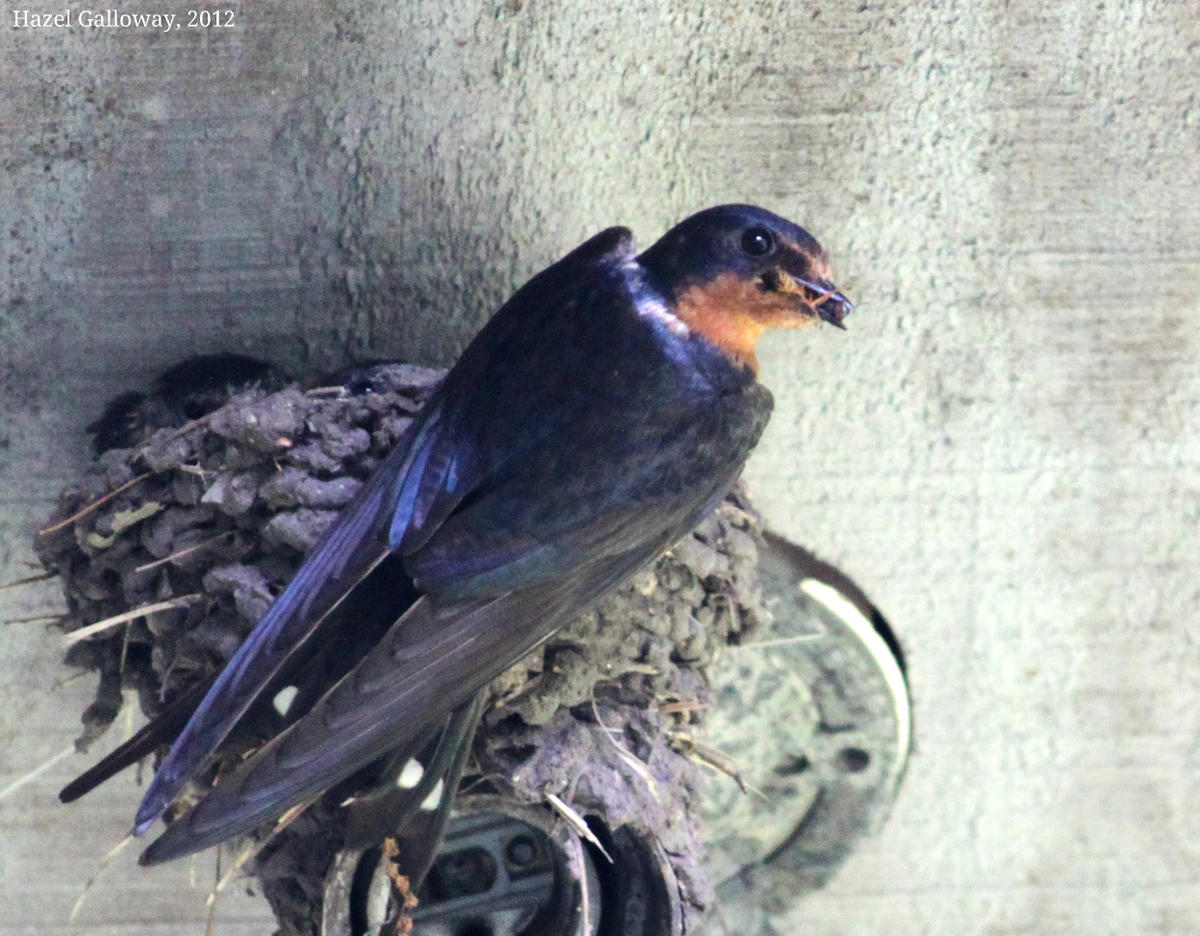Barn swallows, the most common species of swallow in the world, can be found on every major land mass barring only Australia and Antarctica. From Northern Europe to South America to Indonesia, the native range of this single species—Hirundo rustica—is astounding. Migrating north in the summer, their prime breeding areas include north-central Asia, the Middle East, the Far East, Northern Africa, and North America. Although 7 different subspecies are recognized across its range, they all are fairly similar in appearance. The most important identifying characteristic of this species is its deeply forked tail, which is slightly longer in males than in females. These swallows are a glossy blue-black color above and tan below, with orangey patches on their throat and forehead.
Barn swallows, like Juncos, are socially monogamous (one social partner) but genetically polygamous (male swallows father eggs in many nests besides their own). Male swallows attract mates by singing and fanning their tails, likely to display their length and symmetry. In these birds, symmetry in the wings and tail has been found to be a good indicator of strength and longevity, as asymmetry is often caused by problems such as food deficiency, parasites, or pathogens. Tail length, another sexually selected trait, has been shown to be an indicator of increased offspring vitality, longevity, and resistance to disease. Thus, by selecting a long-tailed or symmetrical male, females are choosing a mate with indicators of being of good genetic stock, likely to produce strong, healthy offspring.
After choosing mates, pairs of barn swallows usually raise two broods of chicks every summer. Beginning as early as May, both the male and female set about building a nest made from mud and their own saliva. They typically mount these nests on or in natural structures sheltered from the elements, such as rock outcropping or caves. However, they are well suited to utilize human structures and often seek out barns, buildings open to the outdoors, eaves, docks, and other human creations that provide enough shelter. Some have even been known to build their nests attached to slow-moving trains! After constructing their mud nest, they line the inside with soft grass and feathers.
Females lay anywhere from 3 to 7 eggs in the nest, and both parents help incubate the eggs until they hatch in around two weeks. Upon hatching, the tiny chicks are almost completely dependent upon their parents until they fledge in 20 days. Growing from a blind, pink, squirming hatchling to a large and fully-feathered fledgling in just under three weeks is no mean feat; the parents are known to feed their chicks as many as 400 times in a single day. In the week or two following fledging, the young swallows often continue to be fed by their parents and to sleep in the nest at night. However, by the beginning of the third week after their fledging, most young swallows will have dispersed far and wide, often joining new colonies. Some, however, stay to help their parents raise the next brood of young. They will be able to mate and raise their own young by the year following their birth, and have a lifespan of around four years.
Like all swallows, H. rustica is almost exclusively an insectivore. Adapted to feeding and drinking on the wing, swallows catch almost all of their prey (usually flying insects such as flies, crickets, dragonflies, beetles, and moths) while airborne. However, in their turn, the young are predated by many of the larger birds, mammals, and reptiles that one would expect to feed on baby birds. Although the adults are far less vulnerable, they can still become food for many predatory birds, such as hawks, falcons, and owls.
This nest, built in a typical location under the shelter of a human construction, contains four young on the point of fledging. One can also see barn swallows swooping just outside the Lewis steps, and in great numbers near the pavilion and Murray, as well as feeding over the pond. This male specimen is part of the University of Virginia herbarium collection.





